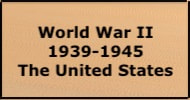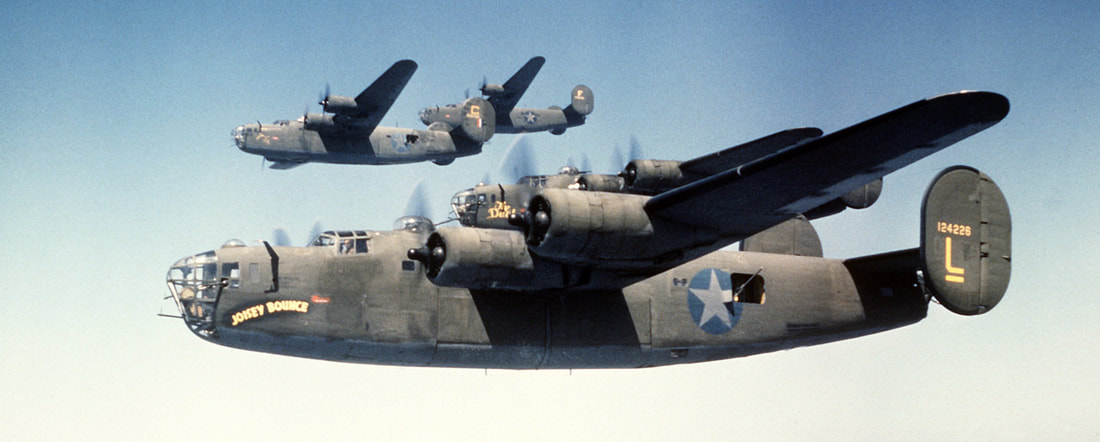bigpigeon.us webpage WWII US > Strategic Bombing, updated & links checked 27 Aug 2023.
Before World War II, strategic bombing advocates theorized that a small number of large aircraft attacking selective distant targets could effectively alter warfare and actually make it less brutal by destroying the enemy's ability to continue fighting.
Strategic bombing was practiced on a large scale by English and American air forces against numerous targets in continental Europe and, starting in 1944, by the United States against the Japanese home islands. However, factors such as massive antiaircraft fire forced conventional bombers to fly so high that accuracy with traditional dumb bombs was not possible. As WWII progressed, the strategic bombing concept of bombing a specified target with a few planes morphed to that of area bombing with hundreds of aircraft.
As practiced during World War II, tens of thousands of B-17, B-24, and B-29 air crew members died in strategic bombing, along with some millions of civilians in the areas under attack.
Strategic bombing was practiced on a large scale by English and American air forces against numerous targets in continental Europe and, starting in 1944, by the United States against the Japanese home islands. However, factors such as massive antiaircraft fire forced conventional bombers to fly so high that accuracy with traditional dumb bombs was not possible. As WWII progressed, the strategic bombing concept of bombing a specified target with a few planes morphed to that of area bombing with hundreds of aircraft.
As practiced during World War II, tens of thousands of B-17, B-24, and B-29 air crew members died in strategic bombing, along with some millions of civilians in the areas under attack.
Sources for Big Pigeon's WWII US > Strategic Bombing webpage:
- The webpage header image, Four B-24s in Formation - excerpted from https://en.wikipedia.org/wiki/Consolidated_B-24_Liberator. 36 men from my roster of Pottawattamie area WWII dead flew to their deaths in B-24s.


